www.GANCARZ.com
Travel Photos
Florence
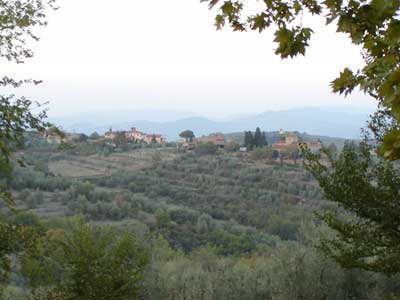
Florence is set in the Tuscany region of Italy, famous for its wine and its olives.
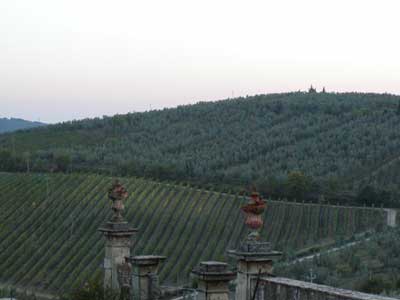
In the foreground are rows of grape vines. In the background are rows of olive trees.
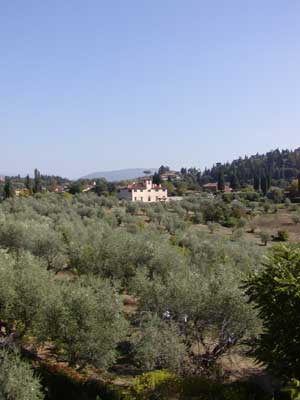
Here is another close up of olive trees.
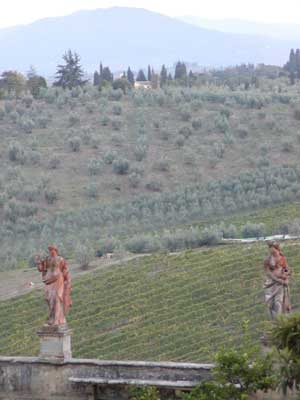
Another shot of grape vines. These pictures were taken from around a castle that we ate dinner at one night. Before dinner we were treated to a traditional flag throwing exhibition. Unfortunately my camera died and I have no pictures of the castle or of the flag throwing.
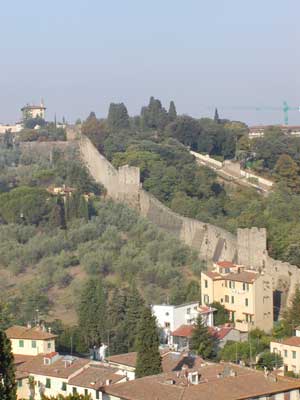
This is a view of the country side from the Michelangelo Piazza in Florence. Here you can see the remnants of the ancient wall that used to surround and protect the city.
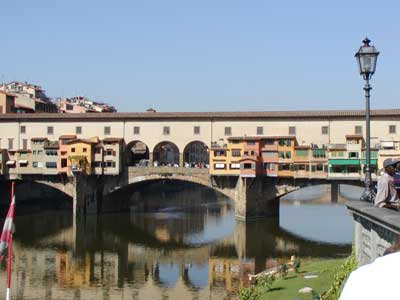
Here is the famous Ponte Vecchio bridge of Florence. The bridge is for pedestrians only and is lined with shops.
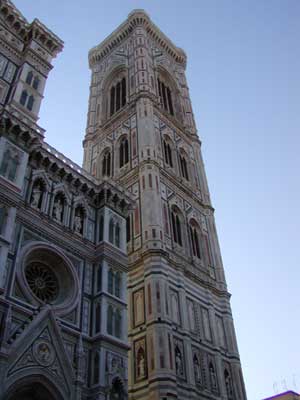
This is the Duomo in Florence. It is covered in red, white and green marble (the colors of the Italian Flag).
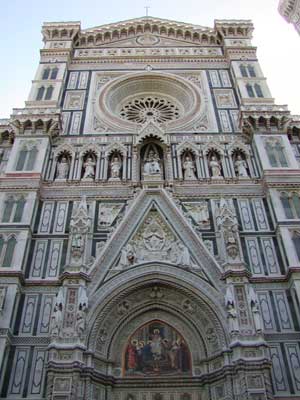
Here is another picture of the front facade of the Duomo. Our guide told us an interesting bit of trivia. A Duomo, a Cathedral and a Basilica are all terms used to describe churches. A Duomo is the main church of a city. When it was built, it was intended to be large enough to contain the entire population of that city. If the city was invaded, the people would congregate inside the Duomo for shelter and protection. A Cathedral is the main church of a Cardinal. And a Basilica is a church where a Saint is buried. So a church could be one, two, all or none of the above. In the case of this church, it is only a Duomo.

Here is a picture of the Duomo's dome. Up until Michelangelo built the dome over Saint Peter's Basilica, this structure stood as the largest dome in the world.
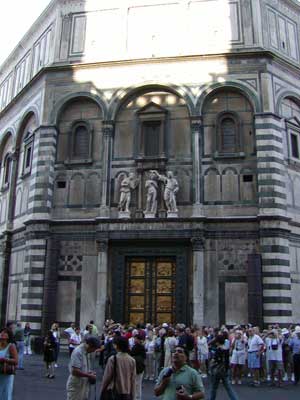
Across the street from the Duomo is the Baptistry.
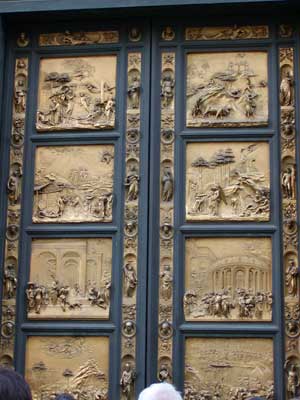
The doors of the Baptistry are called the "The Paradise Doors". The depict scenes from the Old Testament. These are actually a replica, the originals were removed to be restored.
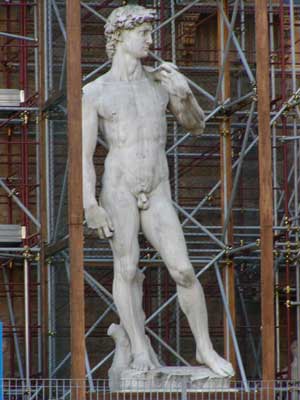
Speaking of replicas, here is a replica of Michelangelo's Statue of David in the Piazza della Signoria. The original is now protected in a museum and can not be photographed, so I had to settle for a picture of this one.
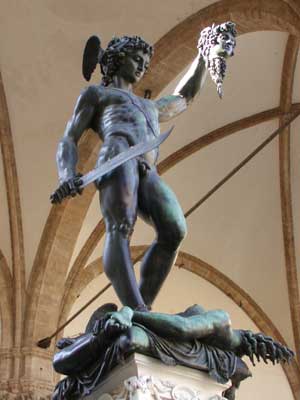
The Piazza della Signoria is actually a sort of open air museum where many incredible sculptures are displayed. Here is Cellini's bronze Perseus after he slayed Medusa.
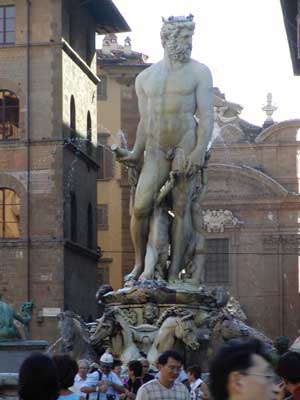
Also in the piazza is the Neptune fountain. Always the art critics, the people of Florence called it "The Big White Thing". When it was unveiled, they told the artist that it was a beautiful piece of marble, too bad he ruined it. Ouch. I don't think it's that bad.
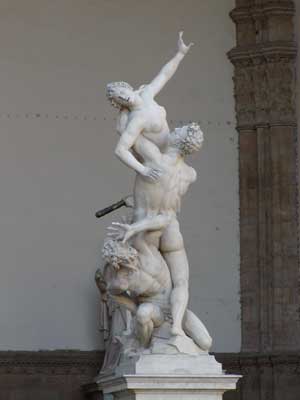
Still on the piazza, this is the Rape of Sabines by Giovanni da Bologna.
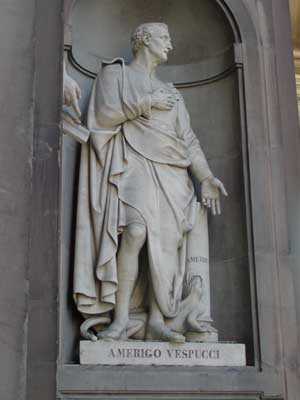
And here is a statue of Amerigo Vespucci. Born in Florence, North and South America were named after him in honor of his exploration of the "New World".
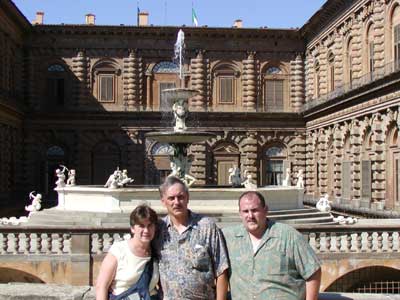
Here my Mom, Dad and I pose in front of a fountain at the Pitti Palace. The palace became a private museum of painting and sculptures and was later opened to the public. We decided to tour the extensive Boboli gardens that open up behind the palace.
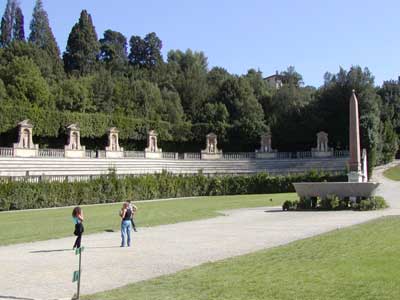
Here is a large courtyard with an Egyptian obelisk at its center. We were told that after the Roman occupation, Italy actually has more obelisks than Egypt.
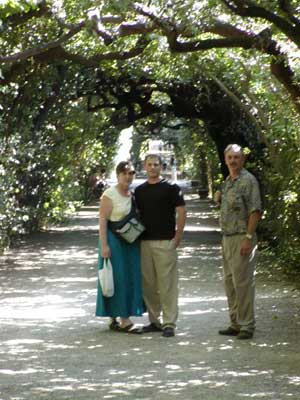
The gardens contained long walkways where the trees were grown to form a canopy. Here my brother poses with my Mom and Dad. The scale was immense. We estimated that we walked two or three miles when the day was done.
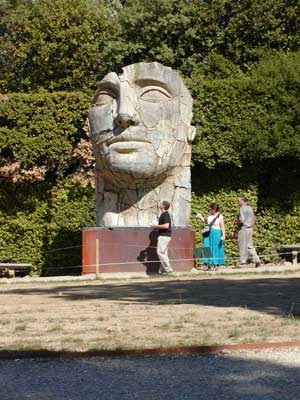
In another garden opening, we came across this sculpture. There wasn't anything to tell us what is was, but I thought it was pretty interesting.
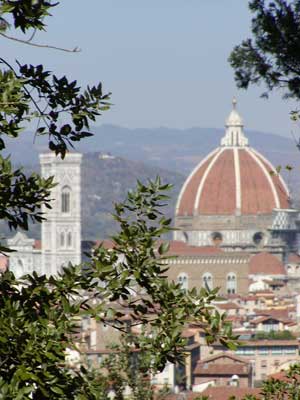
Here is a view of the Duomo from the Boboli gardens.
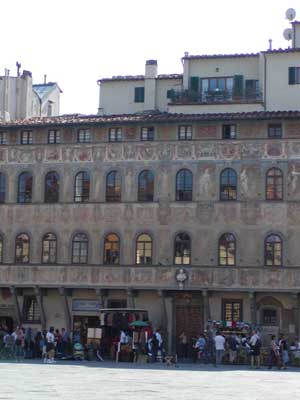
Here is a building on the Santa Croce square. Even though they are faded, the paintings on the facade are beautiful.
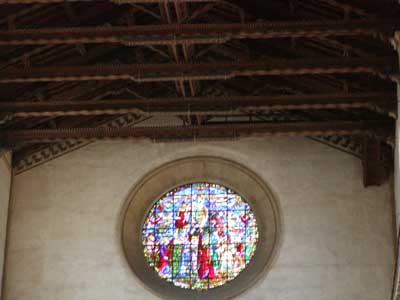
Located on the square is one of the largest churches in Florence, the Basilica of Santa Croce. This view from inside shows the original wooden rafters used to make the roof.
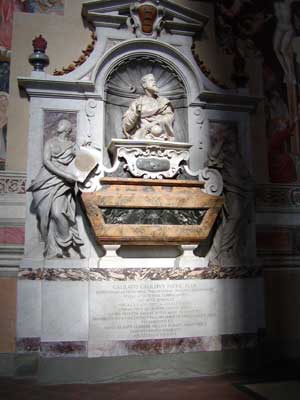
Inside the church are the tombs of many famous people. Here is the tomb of Galileo Galilei, inventor of the telescope among other things.
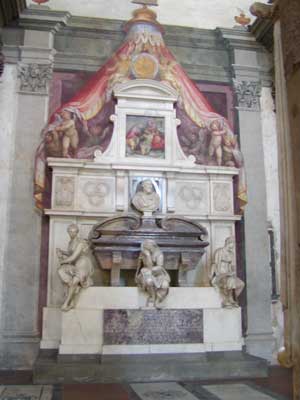
Across from Galileo is the tomb of Michelangelo. The pope wanted him to be buried in Rome, but Michelangelo, who considered himself a "Son of Florence", wanted to be buried in Florence. After his death, his nephew stole the body to be buried in Santa Croce.
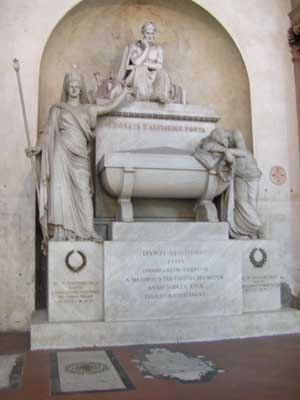
Here is the tomb of Niccolo Machiavelli. He was a political philosopher, born in Florence, and most famous for his work, "The Prince", in which he offered a young prince advice on how to keep his power. He believed the price could best keep his power by the judicious use of violence, by respecting private property and the traditions of his subjects, and by promoting material prosperity. I spent a whole term in high school studying "The Prince" for social studies class.
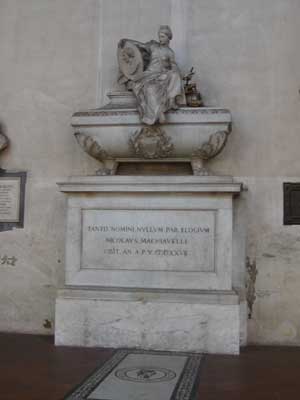
Here is the tomb of Dante, and Italian poet also born in Florence. He is most famous for his work, the "Divine Comedy", which details his journey through Hell, Purgatory, and Heaven.
Last Updated: 12/13/03